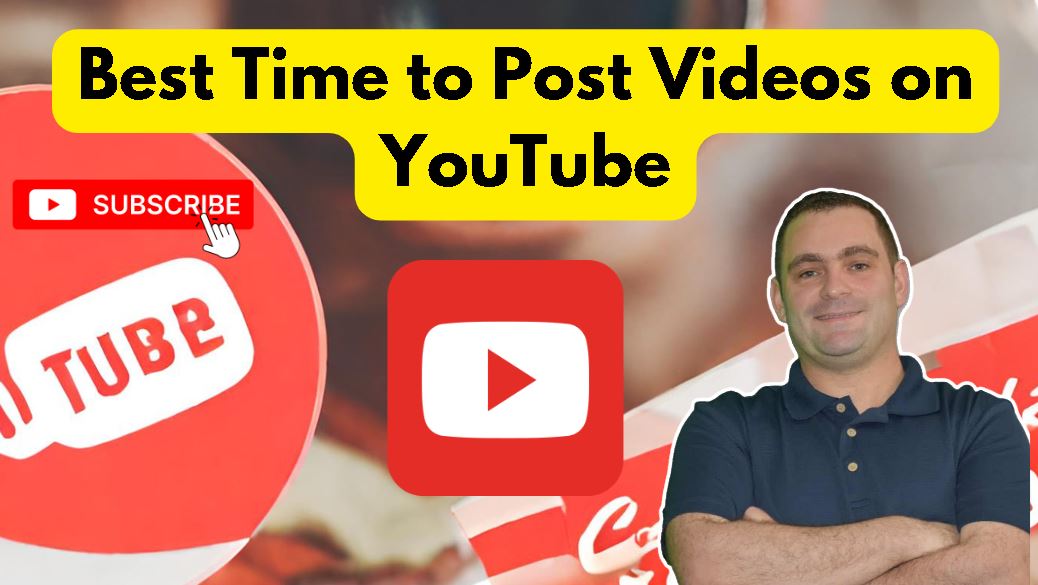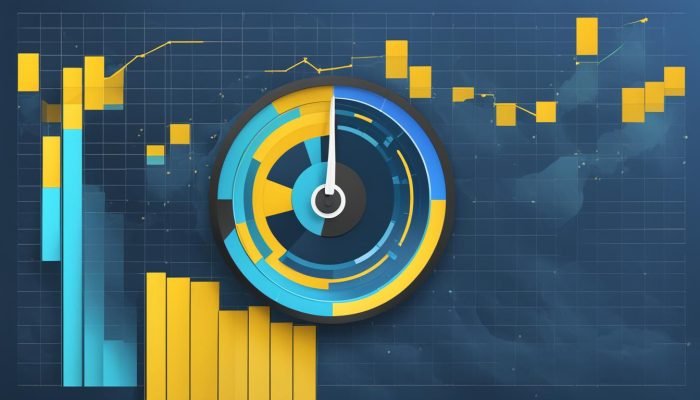Timing is crucial when posting new content on your YouTube channel. Posting at the best times is a way to make sure your YouTube videos will reach your target audience when they’re most active. Consider your audience demographics and their daily routine, and use YouTube analytics to understand peak times and which days of the week your target audience is online. The golden window for posting on YouTube is between 2 p.m. and 4 p.m. (ET), with Sunday standing out as the best day. The worst time to post on YouTube is between 3 a.m. and 5 a.m. ET. Finding the best time to post on YouTube is a calculated strategy that’s unique to your channel. Use YouTube analytics, experiment with different posting times, and consider time zones, video types, and competitor analysis to determine the best time for your content.

Key Takeaways:
- Determining the best time to post on YouTube requires understanding your target audience and their viewing habits.
- Use YouTube analytics to gather data on your audience demographics, behaviors, and peak times when they are engaged with your content.
- Experiment with different posting times, days of the week, and conduct A/B testing to find the optimal posting schedule for your channel.
- Consider time zones if you have a global audience and adjust your posting schedule accordingly.
- Different video types may perform better at different times, so pay attention to how your audience responds to different content formats.
Why Posting Time Matters on YouTube
Posting at the best times is crucial for maximizing the reach and engagement of your YouTube videos. The timing of your posts can significantly impact how they perform in terms of viewership metrics and audience availability. Understanding why posting time matters on YouTube and how it relates to the YouTube algorithm can help you optimize your content strategy and achieve success as a YouTube Creator.
The YouTube algorithm plays a key role in determining the visibility and recommendation of your videos. It takes into account various factors, including viewership metrics and engagement metrics, to understand viewer preferences and deliver relevant content. By posting at the best times, you can increase the likelihood of your videos being seen by your target audience and improve your chances of receiving higher engagement metrics.
To determine the best posting time for your YouTube videos, it’s essential to utilize YouTube analytics. This tool provides valuable insights into your audience demographics, peak times of online activity, and viewer behavior. By analyzing this data, you can identify the optimal time slots when your target audience is most active and available to watch your videos. Consider factors such as time zones and audience availability to ensure that you reach viewers around the world.
The YouTube algorithm is designed to reward consistent and high-quality content. While posting at the right time is important, it’s equally crucial to focus on creating engaging and valuable videos that resonate with your target audience. By understanding the YouTube algorithm and leveraging YouTube Studio’s analytics, you can refine your content strategy and increase your chances of success on the platform.
Table: Posting Time and YouTube Success
| Posting Time | Benefits |
|---|---|
| Golden Window: 2 p.m. to 4 p.m. (ET) | – Aligns with peak viewing times – Maximizes video visibility – Increases chances of YouTube algorithm recognition |
| Worst Time: 3 a.m. to 5 a.m. (ET) | – Low viewership engagement – Negative impact on YouTube algorithm perception – Disrupts posting schedule and consistency |
By understanding the importance of posting time, leveraging YouTube analytics, and creating valuable content, you can optimize your YouTube channel for success. Experiment with different posting times, analyze your audience’s behavior, and adapt your content strategy accordingly. By doing so, you can maximize viewership, engagement, and overall YouTube success.

Maximize Your Audience Availability
When determining the best time to post on YouTube, it’s crucial to consider your audience demographics and their daily routine. Understanding when your target audience is online and available to watch your videos can help you maximize your views per video and increase engagement. To do this effectively, utilize the insights provided by YouTube analytics.
YouTube analytics allows you to gather data on your audience’s behaviors and preferences. It provides information on peak times when your audience is most active, giving you valuable insights into their availability. By analyzing this data, you can schedule your video posts during these peak times to ensure maximum viewership.
In addition, experimenting with different posting times can also help you find the optimal time to reach your target audience. By trying out different posting schedules and monitoring the response from your viewers, you can refine your strategy and determine the best time for your content.
To summarize, understanding your audience’s daily routine and analyzing YouTube analytics are key factors in maximizing your audience availability. By posting during peak times and experimenting with different posting schedules, you can increase your viewership and engagement, ultimately driving the success of your YouTube channel.
| Key Points | |
|---|---|
| Consider audience demographics and daily routine | Understanding your audience’s habits and availability is crucial in determining the best time to post on YouTube. |
| Utilize YouTube analytics | Use YouTube analytics to gather data on your audience’s behaviors and preferences, including peak times when they are most active. |
| Experiment with posting times | Try out different posting schedules to find the optimal time to reach your target audience. |
The YouTube Algorithm and Video Recommendations
Understanding how the YouTube algorithm works is essential for creators looking to maximize the reach and engagement of their videos. The YouTube algorithm is a complex system that determines which videos are recommended to users based on various factors such as viewer preferences, watch history, and engagement metrics. By analyzing user data and behavior, the algorithm aims to provide users with personalized content that aligns with their interests and keeps them engaged on the platform.
One of the key components of the YouTube algorithm is the video recommendation engine. This engine utilizes machine learning and AI techniques to analyze vast amounts of data and make predictions about which videos users are likely to enjoy. It takes into account factors such as video metadata, user demographics, and historical viewing patterns to generate personalized recommendations.

| Key Points | Benefits | Considerations |
|---|---|---|
| Posting between 3 a.m. and 5 a.m. ET | Less competition from other creators | Lower viewer activity and engagement |
| Limited initial traction | Opportunity to experiment with unconventional posting times | Reduced visibility and reach |
| Disruptive to posting schedule and consistency | Avoiding algorithmic promotion during low activity periods | Missed opportunities for viewer engagement |
How to Find Your Best Time to Post on YouTube
Finding the best time to post YouTube videos is a crucial task for content creators who want to maximize their reach and engagement. To discover the ideal posting time for your target audience, there are several strategies you can employ, including utilizing YouTube analytics, conducting A/B testing, and analyzing competitor channels.
Using YouTube Analytics
YouTube analytics provides valuable insights into your audience demographics, behaviors, and peak engagement times. By examining this data, you can identify patterns and trends that will help you determine the best time to post your videos. Look for specific days of the week and time slots when your audience is most active and adjust your posting schedule accordingly. Experiment with different posting times and analyze the performance of each video to gain a better understanding of your viewers’ preferences.
Conducting A/B Testing
A/B testing involves posting videos at different times and comparing the results to determine which posting time yields better engagement and viewership. Split your audience into two groups and release the same video at different times to see which group has a higher view count, likes, comments, and other engagement metrics. This method allows you to directly compare the performance of your videos and identify the optimal posting time for your specific target audience.
Analyzing Competitor Channels
Another effective strategy is to analyze successful YouTube channels in your niche and examine their posting schedules. While you shouldn’t copy their strategy directly, studying their patterns can give you insights into the best days and times to test for your own channel. Pay attention to channels with similar target audiences and content types, as their posting schedules may align with your audience’s preferences. Use this information as a reference point when determining your own posting schedule.
By combining these strategies and continuously analyzing your audience’s behavior, you can find the best time to post your YouTube videos. Remember, finding the optimal posting time is an ongoing process that requires experimentation and adaptation as your audience’s preferences evolve. Regularly review your analytics, conduct A/B tests, and stay aware of industry trends to ensure your content reaches its full potential.
| Strategy | Benefits | Limitations |
|---|---|---|
| Using YouTube Analytics | – Provides valuable insights into audience demographics and behaviors – Helps identify peak engagement times | – Requires learning how to navigate and interpret YouTube analytics – Only provides data for your specific channel |
| Conducting A/B Testing | – Allows for direct comparison of posting times – Provides concrete data on engagement metrics | – Requires a significant sample size to draw meaningful conclusions – Can be time-consuming |
| Analyzing Competitor Channels | – Offers insights into successful posting schedules – Helps identify patterns and trends | – Not all competitor channels may be relevant to your target audience – Requires ongoing monitoring and analysis |
Consider Time Zones and Global Audiences
When determining the best time to post on YouTube, it’s important to consider the influence of time zones and your global audience. The timing of your content can significantly impact its visibility and reach, especially when catering to viewers from different parts of the world.
Understanding the geographical distribution of your audience is essential for optimizing your YouTube content for a global audience. Utilize YouTube analytics and geographical data to identify where the majority of your viewers are located. This information can help you adjust your posting schedule to align with peak viewing times in different time zones.
For example, let’s say you have a significant number of viewers in Europe and Asia. By taking into account the time zones in these regions, you can strategize to publish your videos during their respective peak viewing times. This increases the likelihood of your content being seen and engaged with by a larger audience.
| Time Zone | Peak Viewing Time |
|---|---|
| Eastern Standard Time (EST) | 2 p.m. – 4 p.m. |
| Central European Time (CET) | 8 p.m. – 10 p.m. |
| Japan Standard Time (JST) | 9 p.m. – 11 p.m. |
By considering time zones and adjusting your posting schedule accordingly, you can optimize your YouTube content for a global audience, ensuring that your videos are being shared and viewed by viewers from different parts of the world.
The Importance of Video Types
When it comes to maximizing your reach and engagement on YouTube, understanding the preferences of your target audience is crucial. Different video types can perform differently depending on the time of posting and the content preferences of your viewers. By analyzing YouTube analytics and experimenting with various video types, you can optimize your posting schedule and cater to your audience’s preferences.
One type of video that has gained significant popularity on YouTube is YouTube Shorts. These are short-form videos that typically last up to 60 seconds and are designed to capture viewers’ attention quickly. YouTube Shorts are ideal for delivering quick and engaging content, making them well-suited for posting during weekdays when viewers are looking for digestible content during their busy schedules. Experiment with YouTube Shorts and analyze the performance to determine the optimal time to post them for maximum visibility and engagement.
On the other hand, longer-form content such as tutorials or vlogs may be more suitable for weekends when viewers have more time to engage with in-depth videos. Consider the preferences of your target audience and the nature of your content when deciding on the best time to post longer videos. Experimentation and analysis of YouTube analytics will help you identify the optimal posting schedule for different video types, increasing the chances of reaching and resonating with your audience effectively.
Key Takeaways:
- Consider the preferences of your target audience when determining the best time to post different types of videos.
- YouTube Shorts are ideal for quick and engaging content, suitable for weekdays when viewers are looking for digestible videos.
- Longer-form content like tutorials or vlogs may perform better on weekends when viewers have more time to engage.
- Analyze YouTube analytics to identify the optimal posting schedule for different video types and maximize your reach and engagement.
By tailoring your posting schedule to the preferences of your audience and the nature of your content, you can optimize your YouTube channel’s performance and increase the likelihood of reaching and engaging your target audience effectively.
| Video Type | Best Time to Post |
|---|---|
| YouTube Shorts | Weekdays during peak hours (e.g., 2 p.m. – 4 p.m. ET) |
| Longer-Form Content | Weekends when viewers have more time (e.g., Saturdays or Sundays) |
Analyzing Competitors and Industry Trends
When it comes to determining the best time to post on YouTube, analyzing competitors and industry trends can provide valuable insights. While it’s important not to copy their strategy directly, studying successful YouTube channels in your niche can give you a better understanding of posting schedules that work. By examining their patterns and consistency, you can gain valuable information to inform your own posting schedule.
Competitor analysis involves studying the posting patterns of top channels in your industry. Take note of the days and times they regularly publish new content and observe any consistent themes or trends. This analysis can help you identify not only the best days and times to post for your target audience, but also the content types and formats that perform well within your niche.
By staying informed about industry trends, you can also adapt your posting schedule to align with audience preferences. Keep an eye on emerging formats, viral video trends, and shifts in viewer preferences. By incorporating these insights into your content strategy, you can position yourself as a relevant and engaging creator in your niche.
Table: Posting Schedule Analysis of Successful YouTube Channels
| Channel | Posting Days | Posting Times (ET) | Content Types |
|---|---|---|---|
| Channel 1 | Monday, Thursday | 4:00 PM, 7:00 PM | Tutorials, Product Reviews |
| Channel 2 | Tuesday, Friday | 6:00 PM, 8:00 PM | Vlogs, Challenges |
| Channel 3 | Wednesday, Saturday | 5:00 PM, 9:00 PM | Travel, Lifestyle |
Table: This table provides an example of a posting schedule analysis for successful YouTube channels. It showcases the posting days, times, and content types for each channel. By studying this table, content creators can gain insights into the strategies employed by successful channels and apply them to their own posting schedules.
By leveraging competitor analysis and industry trends, you can fine-tune your posting schedule to maximize audience engagement and reach. Use the information gathered from successful channels in your niche to inform your own content strategy. Remember to consider your unique target audience, their viewing habits, and the type of content that resonates with them. Regularly analyzing competitors and industry trends will help you stay ahead of the curve and drive continued success on YouTube.
Consistency and Templates for Success
Consistency is a crucial factor in achieving success in YouTube marketing. By establishing a regular posting schedule, you can build trust with your audience and create anticipation for your new content. Consistency is key for retaining and growing your viewership over time.
Creating a posting schedule requires careful planning and organization. Consider factors such as the frequency of your uploads and the optimal time to post based on your target audience’s behavior and preferences. Dedicate time to brainstorming content ideas, scripting, filming, and editing your videos to ensure a consistent flow of high-quality content.
One way to streamline your content creation process is by using templates. Templates provide a structured framework for your videos, making it easier to plan and execute your ideas. Create a template for your video intros, outros, lower thirds, and other recurring elements to maintain a consistent brand image throughout your content.
Templates also help you optimize your workflow and save time. By having pre-designed visuals and graphics, you can focus more on delivering valuable content and engaging with your audience. Additionally, using templates allows you to maintain a consistent visual style and branding, which is crucial for building recognition and loyalty among your viewers.

| Benefits of Consistency and Templates in YouTube Marketing |
|---|
| 1. Build trust with your audience |
| 2. Create anticipation for new content |
| 3. Optimize your content creation workflow |
| 4. Maintain a consistent brand image |
| 5. Save time and streamline your video production process |
In conclusion, consistency is a vital element in YouTube marketing. By establishing a posting schedule and using templates, you can create a cohesive brand image, build trust with your audience, and optimize your content creation workflow. Remember to analyze your performance metrics, listen to your audience’s feedback, and make adjustments as necessary to maintain a successful YouTube channel.
FAQ
What is the best time to post videos on YouTube?
The golden window for posting on YouTube is between 2 p.m. and 4 p.m. (ET), with Sundays standing out as the best day.
What is the worst time to post on YouTube?
The worst time to post on YouTube is between 3 a.m. and 5 a.m. (ET).
How can I find the best time to post on YouTube for my channel?
Use YouTube analytics, experiment with different posting times, consider time zones, video types, and competitor analysis to determine the best time for your content.
Why does posting time matter on YouTube?
Posting at the best times ensures your videos reach your target audience when they’re most active, increasing viewership metrics and engagement with your content.
How can I maximize my audience availability on YouTube?
Consider your audience demographics, their daily routine, and use YouTube analytics to understand peak times when your target audience is online.
How does the YouTube algorithm affect video recommendations?
The YouTube algorithm tracks viewer preferences to match them with videos they’re likely to enjoy, making it important to focus on creating content that makes viewers happy.
What is the best time to post on YouTube according to statistics?
The golden window for posting on YouTube is between 2 p.m. and 4 p.m. (ET), with Sundays standing out as the best day.
When is the worst time to post on YouTube based on statistics?
The worst time to post on YouTube is between 3 a.m. and 5 a.m. (ET).
How can I find my best time to post on YouTube?
Use YouTube analytics, conduct A/B testing, and analyze successful channels in your niche to determine the ideal posting time for your audience.
Should I consider time zones when posting on YouTube?
Yes, consider the time zones of your target audience to ensure you’re posting at a time that aligns with their peak viewing times.
Do different types of videos perform better at different times?
Yes, shorter videos like YouTube Shorts may perform better during weekdays, while longer videos may be more suitable for weekends when viewers have more time to engage.
How can analyzing competitors and industry trends help with my posting schedule?
Analyzing successful YouTube channels in your niche can provide insights into their posting patterns, helping you determine the best days and times to post for your own channel.
Why is consistency important in YouTube marketing?
Consistency helps build trust with your audience and establishes expectations for when they can expect new content from your channel, leading to increased engagement.
What is the conclusion regarding the best time to post on YouTube?
Finding the best time to post on YouTube requires understanding your target audience, analyzing YouTube analytics, experimenting with different posting times, and considering factors such as time zones and video types.
Conclusion:The Best Time to Post Videos on YouTube
Optimizing your posting time is crucial for YouTube success. By understanding your target audience and analyzing YouTube analytics, you can find the optimal time to reach and engage with your viewers. The golden window for posting on YouTube is typically between 2 p.m. and 4 p.m. ET, with Sundays standing out as the best day. However, it’s important to remember that each channel is unique, and your optimal posting time may vary.
Experimenting with different posting times, considering time zones, and analyzing competitor channels can provide valuable insights. Pay attention to your audience’s behavior, preferences, and peak times to maximize your video’s visibility. Consistency is key, so create a posting schedule and stick to it. By consistently delivering high-quality, engaging content at the right time, you can increase your chances of YouTube success.
Remember that finding the best time to post on YouTube is an ongoing process. Continuously monitor your analytics, adapt to industry trends, and stay ahead of your competitors. By staying informed and optimizing your posting strategy, you can effectively reach your target audience, increase viewership, and achieve long-term success on YouTube.